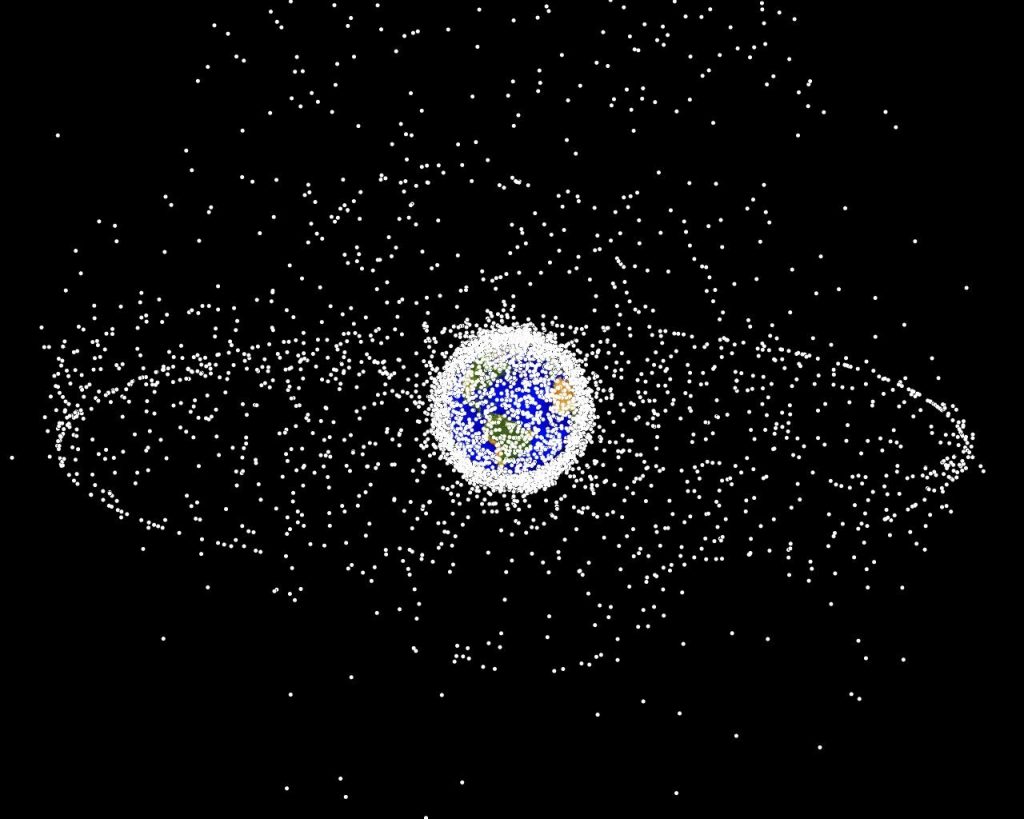Lasers to make space safer

Some of the space debris currently being tracked. Credit: NASA
As you surely know by now, the space close to Earth is becoming more and more crowded with defunct satellites, dropped tools, discarded booster rockets and general man-made bric-a-brac. All of this stuff is in orbit around the planet, at varying altitudes and in variously shaped orbits. And to make it especially dangerous, it’s zipping around at speeds measured in tens of thousands of kilometers per hour – objects ranging in size from a grain of sand to a car travelling many times faster than the most powerful rifle bullet. We can’t even say that it’s only a matter of time before something valuable gets hit, because it’s already happened, and debris from the satellites destroyed in the collision only added to the problem.
So what to do about it? Currently we have radar stations sweeping the skies, identifying and tracking every single piece of debris that can be seen (anything over 10cm across). The orbits are monitored and compared to those of valuable installations, most importantly the International Space Station (ISS). If anything will be passing close enough to warrant concern, then the installation will be instructed to move out of the way (if there is enough time). In the case of the ISS, crew members will hole up in safe areas, sealed off until the danger of collision has passed.
But since this is expensive and disruptive, scientists are constantly looking for better ways to deal with the problem of space junk. A team from Photonic Associates in New Mexico have submitted a paper with an interesting solution: Zap it out of the sky, with gigantic lasers. The idea is not actually that new, nor as exciting as it sounds: The idea is to identify a piece of junk, then illuminate it with a short pulse from a very high-powered laser. A tiny portion of the object will be instantly vapourised, and the expanding vapour will give it a slight push. If everything goes to plan, that little push will be enough to change the object’s orbit, and if everything is calculated properly then the new orbit will bring it down enough to graze the Earth’s atmosphere. That will slow it further, and the object will then come down and burn up on re-entry.
The reason this idea never gained much traction before is two-fold: First, powerful enough lasers are hard to make, and consume enormous amounts of energy. Second, to direct a laser precisely enough to affect an object’s orbit in a controllable way requires incredibly high quality optics to aim the beam. But Photonic Associates say that the technology required has advanced significantly since the idea was first proposed, so that laser-blasting space junk from orbit is now a viable option.
And since such a system would serve equally well as a weapon against foreign satellites and space-craft, no doubt the funding is already being channeled to make it a reality.
